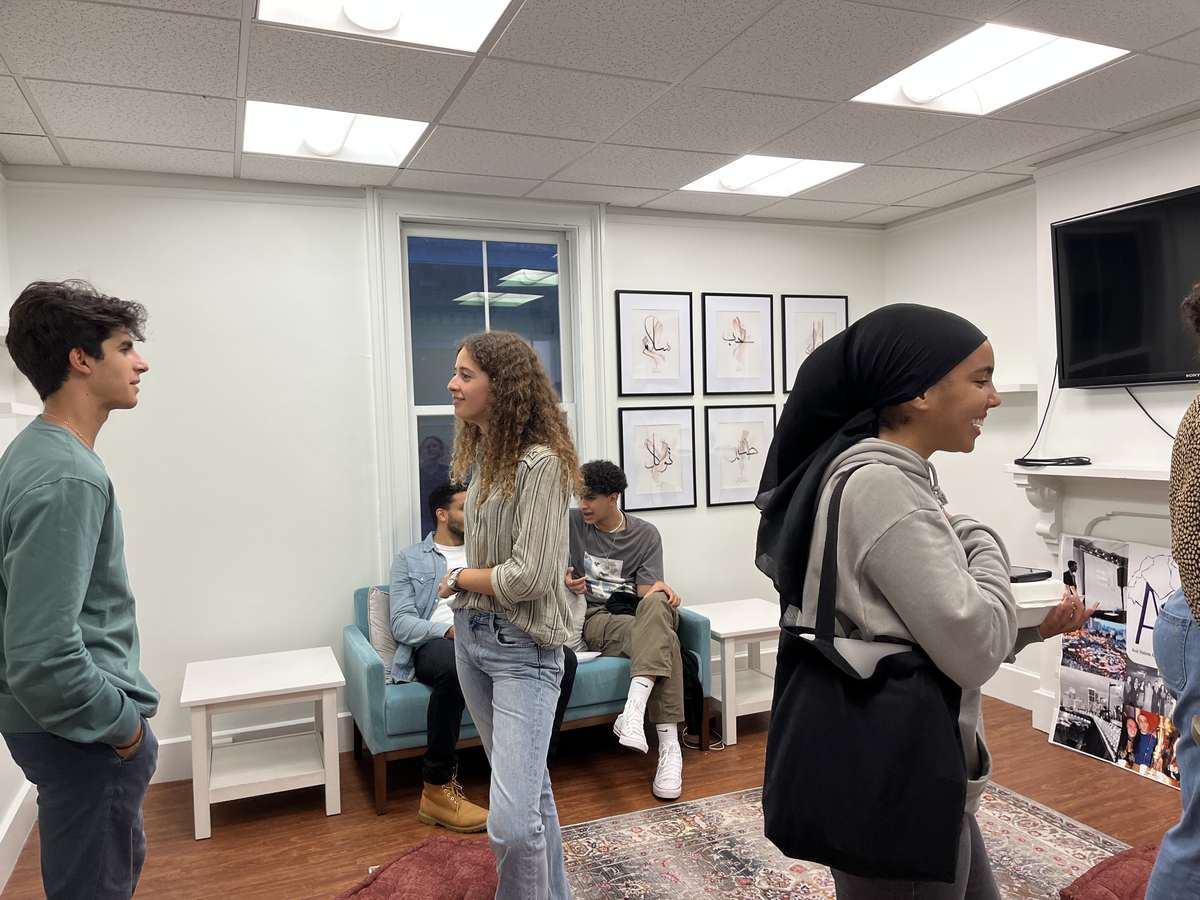MENA students kick off year with celebrations of new space on campus 
MENA student leaders held their first event of the school year in their newly designated room in the Asian American Cultural Center — one student leaders have worked for years to obtain.

Courtesy of Keya Bajaj
On a rainy Tuesday evening this week, students belonging to Yale’s Middle Eastern North African community attended the academic year’s first mixer to meet new students and celebrate the long-awaited opening of a physical space designated for them.
The MENA community, comprising students from 18 countries across the Middle East and North Africa region, welcomed new and returning members alike at their new room, which officially opened its doors this school year. Located on the third floor of the Asian American Cultural Center, or AACC, the MENA room is the culmination of a long effort by student leaders to claim a designated space of their own.
At Tuesday’s mixer, MENA members connected with other Yalies from the region over generous helpings of falafel and baba ghanoush. Leaders also gave students a tour of the new space.
“We hope to find forever friendships here, to celebrate cultural and religious events together,” AACC peer liaison Zahra Yarali ’24 said.
Most of the evening’s conversations took place in the MENA room. Here, in a homey space decorated with Arabic calligraphy wall art and plush floor cushions, community members swapped stories of cultures “split between two continents,” as described by MENA Student Association President Youssef Ibrahim ’25.
But some attendees did note the room’s small size, which was unable to accommodate all of the event’s attendees.
AACC Director Joliana Yee told the News that the room was furnished with the intention of it being a work in progress — a place that MENA members could personalize and make their own.
In the past years, MENA members have shared space with both the AACC and the Afro-American Cultural Center and were assigned peer liaisons from one of the two houses, depending on which region they chiefly identified with.
But student leaders have pushed back on the legacy system, noting that MENA students have an identity distinct from the other two cultural centers.
“We do not fit entirely in either house,” Ibrahim said.
This sense of not belonging, a common sentiment among MENA community members, is fueled by “a lack of awareness of how big the community is here [on campus],” AACC Associate Director Sofia Blenman said.
Blenman added that the new room is a testament to MENA’s goal of “empowering students to feel … that they are seen.”
Still, MENA students face challenges representing themselves on campus. Official documentation, including the Common Application platform, does not offer a Middle Eastern and North African identity option, so there is no administrative record of who on campus identifies as MENA. Group leaders are therefore forced to trawl through residential college class lists to find new recruits and welcome them into the community.
Yee noted the struggle MENA students face of “being racialized as white in the U.S. context but having lived experiences that are drastically different.”
“There is validity to the unique experiences we’ve had,” Yarali added. “We are reclaiming an identity that has been whitewashed for so long.”
“Leaving an impact on the world is a lot about taking up space,” Yarali added, and the newly-inaugurated MENA room may give members of this group a new sense of hope. The group’s plans for the year include celebrations for Ramadan, the Persian New Year, winter solstice and perhaps a cultural fashion show.
MENA is also looking forward to more student-driven events and continued opportunities for collaboration with the AACC, which hosted Tuesday’s mixer.
But the attainment of the room does not mark the end of MENA students’ fight for representation on campus. MENA students have spent years advocating for a cultural center of their own, and that activism will continue, Ibrahim said.
“I aspire for a physical cultural center of our own,” he said. “It is a right for us to be represented.”
The MENA room will host an event with the Arab Students Association this Saturday,
Sept. 10, from 7 p.m. to 9 p.m.







